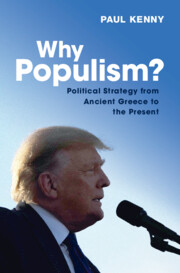Book contents
1 - The Price of Power
Published online by Cambridge University Press: 17 March 2023
Summary
Populism is a political strategy that relies on the use of a personalistic political organization and mass communication to mobilize support in the quest for power; it will be most successful when it is more cost-effective than the alternatives of programmatic political party building or the distribution of patronage. The costs involved in this trade-off come in two forms: direct costs and indirect (or transaction) costs. In politics, very often transaction costs – search, bargaining, and enforcement costs – are the higher ones. Populists lower the costs of mobilizing support by communicating directly with voters instead of working through intermediaries such as party professionals or political brokers. The populist strategy will be most effective when two conditions are met. First, potential voters or supporters must be available for direct mobilization. This means that they must be relatively free of existing party attachments. Second, the opposition should be divided. Most populists win with the backing of a mere plurality rather than a majority. The more the opposition is split between multiple contenders, the more economically viable is the populist strategy.
Keywords
- Type
- Chapter
- Information
- Why Populism?Political Strategy from Ancient Greece to the Present, pp. 1 - 23Publisher: Cambridge University PressPrint publication year: 2023

